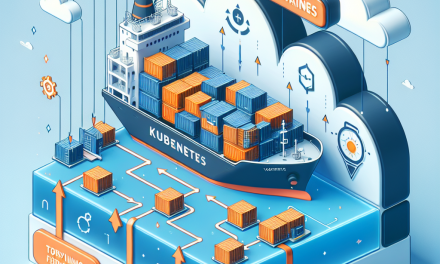As organizations adopt Kubernetes for managing their containerized applications, the need for security becomes paramount. Kubernetes, by design, offers a powerful access control mechanism, but implementing fine-grained access control can be a daunting task. In this guide, we will explore the fundamentals of fine-grained access control in Kubernetes and provide practical strategies for organizations to ensure their clusters are secure and compliant.
Understanding Access Control in Kubernetes
Kubernetes employs a Role-Based Access Control (RBAC) mechanism to manage permissions. At its core, RBAC allows administrators to define who can perform what actions on resources within the cluster. Understanding the three primary components of Kubernetes RBAC is crucial for effective access management:
-
Roles: Roles define a set of permissions within a namespace. They specify what actions can be performed on which resources (e.g., pods, services).
-
ClusterRoles: Similar to Roles, but applicable cluster-wide. ClusterRoles allow for management of resources across all namespaces, making them suitable for cluster-wide operations.
- RoleBindings and ClusterRoleBindings: These bind Roles and ClusterRoles to subjects (users, groups, or service accounts), granting permissions that align with the defined roles.
Step 1: Assess Your Security Needs
Before implementing fine-grained access control, it’s essential to assess your organization’s security requirements. Consider factors such as:
-
Team Structure: Identify various teams and their roles in application development and deployment. Understanding who needs access to what resources is crucial.
-
Data Sensitivity: Classify your data and determine which resources require stricter access controls based on sensitivity.
- Compliance Requirements: Investigate any regulatory requirements that may impact how you manage access to your applications and data.
Step 2: Define Roles and Permissions
Defining roles and permissions requires careful consideration. Here are best practices to guide you through the process:
-
Principle of Least Privilege (PoLP): Grant users the minimum level of access required for their job functions. This reduces the risk of accidental or malicious misuse of resources.
-
Template-based Roles: Create role templates that can be customized for different teams or applications. This approach ensures consistency and reduces redundancy.
- Granular Permissions: Break down your roles into granular permissions. For example, instead of giving full access to pods, consider creating roles that only allow viewing, creating, or deleting specific resources.
Example of a Role
Here is an example of Kubernetes Role YAML for developer users who need to manage only their own namespace:
apiVersion: rbac.authorization.k8s.io/v1
kind: Role
metadata:
namespace: dev-namespace
name: developer-role
rules:
- apiGroups: [""]
resources: ["pods", "pods/log", "services"]
verbs: ["get", "list", "create", "delete"]Step 3: Create Role Bindings
Once roles have been defined, the next step is to create RoleBindings or ClusterRoleBindings to assign these roles to users or service accounts. By clearly specifying the subjects for each binding, you can control who has access to the permissions you’ve defined.
Example of a RoleBinding
Here’s an example of a RoleBinding in dev-namespace for the developer-role:
apiVersion: rbac.authorization.k8s.io/v1
kind: RoleBinding
metadata:
name: developer-binding
namespace: dev-namespace
subjects:
- kind: User
name: johndoe
apiGroup: rbac.authorization.k8s.io
roleRef:
kind: Role
name: developer-role
apiGroup: rbac.authorization.k8s.ioStep 4: Implement Network Policies
Fine-grained access control isn’t limited to resource permissions; it also extends to network traffic between pods. Implementing Network Policies helps restrict traffic and isolate workloads based on roles and responsibilities.
Defining Network Policies
Network Policies govern how pods communicate with each other and other network endpoints. For instance, a policy could allow only specific pods to communicate with a database pod, thus reducing the risk of unauthorized access.
Example of a Network Policy
Here is a basic example of a Network Policy that allows only specific pods to access the db service:
apiVersion: networking.k8s.io/v1
kind: NetworkPolicy
metadata:
name: db-access
namespace: dev-namespace
spec:
podSelector:
matchLabels:
role: database
ingress:
- from:
- podSelector:
matchLabels:
role: backendStep 5: Audit and Monitor Access
Regular auditing of access control and permissions is critical. Kubernetes provides audit logging capabilities to help you monitor API requests and changes in access controls. Use tools like KubeAudit, OPA-Gatekeeper, and K-Rail to enforce compliance and mitigate security risks.
Conclusion
Implementing fine-grained access control in Kubernetes is a vital aspect of maintaining a secure and compliant environment. By following the steps outlined in this guide, organizations can ensure that their Kubernetes clusters are configured to protect valuable resources against unauthorized access, thus fostering a culture of security awareness. As Kubernetes continues to grow in popularity, the emphasis on robust access control will only increase, making this a crucial area of focus for DevOps teams worldwide.
Remember, security is a continuous process—regular reviews, updates, and audits can help adapt access controls to the evolving needs of your organization. Stay vigilant and keep your Kubernetes clusters secure!





